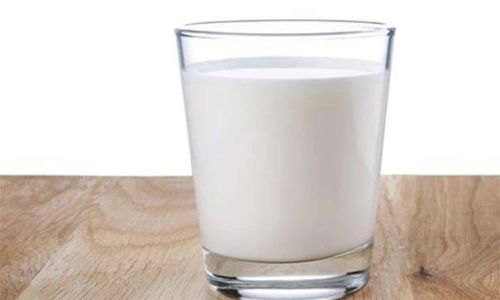Introduction
Fresh goat’s milk, renowned for its nutritional benefits and delicate flavor, has gained significant popularity in recent years. Its rich content of medium-chain fatty acids, vitamins, minerals, and easy digestibility makes it an ideal choice for individuals seeking healthier alternatives to cow’s milk. However, preserving fresh goat’s milk can be challenging due to its perishable nature. Improper storage can lead to rapid spoilage, compromising its quality and safety. This comprehensive guide aims to provide practical insights on how to effectively preserve fresh goat’s milk, ensuring it retains its nutritional value and fresh taste for as long as possible.

Understanding the Perishability of Goat’s Milk
Before diving into preservation techniques, it’s crucial to understand the factors that contribute to the perishability of goat’s milk. Goat’s milk, like any other dairy product, is susceptible to microbial contamination and enzymatic activity, which can lead to spoilage. The primary microorganisms involved in milk spoilage include bacteria such as Lactobacillus, Streptococcus, and Pseudomonas, which can multiply rapidly under favorable conditions. Enzymatic activity, particularly lipase and protease enzymes present in milk, can also cause changes in milk’s texture and flavor.
Temperature plays a pivotal role in the spoilage process. Warm temperatures accelerate microbial growth and enzymatic activity, while cooler temperatures slow them down. Therefore, controlling temperature is essential for preserving fresh goat’s milk.
Immediate Post-Milking Handling
The first step in preserving fresh goat’s milk begins with proper handling immediately after milking. Here are some key practices to follow:
-
Cleanliness: Ensure that all milking equipment, including teats, buckets, and storage containers, are thoroughly cleaned and sanitized before use. This minimizes the risk of microbial contamination.
-
Cooling: As soon as possible after milking, cool the milk to a temperature below 4°C (39.2°F). This can be achieved using a refrigerator, cold water bath, or milk cooler. Rapid cooling inhibits microbial growth and extends the shelf life of the milk.
-
Straining: Pass the milk through a clean, fine-mesh strainer to remove any hair, dirt, or debris that may have been introduced during milking.
-
Avoiding Contamination: Handle the milk with clean hands and avoid exposing it to air for prolonged periods, as this can introduce oxygen, which promotes the growth of aerobic bacteria.
Storage Containers
Choosing the right storage container is another critical aspect of preserving fresh goat’s milk. Here are some considerations:
-
Material: Opt for glass or stainless steel containers, as they are non-reactive and do not leach chemicals into the milk. Avoid using plastic containers, especially those containing bisphenol A (BPA), which can migrate into food and pose health risks.
-
Sealability: Ensure the container has a tight-fitting lid to prevent air exposure and contamination.
-
Cleanliness: Always wash and sanitize storage containers before use.
Refrigeration

Refrigeration is the most effective method for preserving fresh goat’s milk. Here are some guidelines:
-
Temperature Control: Store the milk in the refrigerator at a temperature of 4°C (39.2°F) or below. Use a refrigerator thermometer to monitor the temperature regularly.
-
Location: Place the milk on a middle or lower shelf, where the temperature is more stable. Avoid storing it in the door compartment, as frequent opening and closing can cause temperature fluctuations.
-
Organization: Label the containers with the date of milking to keep track of freshness. Organize the milk so that older batches are used first.
Freezing
For longer-term preservation, freezing is an option. However, it’s important to note that freezing alters the texture and flavor of the milk slightly upon thawing. Here’s how to freeze fresh goat’s milk effectively:
-
Preparation: Pour the milk into freezer-safe containers, leaving some headspace to allow for expansion during freezing.
-
Portioning: Freeze the milk in smaller portions if possible, as this makes it easier to thaw and use as needed.
-
Labeling: Clearly label the containers with the date of milking and the date of freezing.
-
Temperature: Place the containers in the freezer at a temperature of -18°C (0°F) or below.
Thawing Frozen Milk
When you’re ready to use the frozen milk, thaw it slowly in the refrigerator to prevent the formation of large ice crystals, which can further alter its texture. Avoid thawing milk on the counter or in hot water, as this can promote bacterial growth. Once thawed, use the milk within a few days for best quality.
Pasteurization
Pasteurization is a process that involves heating milk to a specific temperature for a brief period to kill harmful pathogens and extend its shelf life. While raw goat’s milk is often preferred by some for its perceived health benefits, pasteurization can provide an additional layer of safety, especially if the milk is sourced from goats that are not regularly tested for diseases.
Home pasteurization can be done using a double boiler or a pot with a tight-fitting lid. Heat the milk to a temperature of 63°C (145°F) and hold it there for 30 minutes, stirring occasionally to prevent scorching. Alternatively, you can heat the milk to 72°C (161.6°F) for 15 seconds. After pasteurization, cool the milk rapidly to 4°C (39.2°F) or below to prevent the growth of thermophilic bacteria.

Monitoring and Using Milk
Regularly monitor the milk for signs of spoilage, such as off odors, changes in color, or a thick, clumpy texture. If any of these signs are present, discard the milk immediately.
When using fresh goat’s milk, always pour what you need and return the remainder to the refrigerator promptly. Avoid leaving milk out at room temperature for more than two hours, as this can promote bacterial growth.
Conclusion
Preserving fresh goat’s milk requires careful handling, proper storage, and an understanding of its perishability. By following the guidelines outlined in this guide, you can ensure that your goat’s milk retains its nutritional value, fresh taste, and safety for as long as possible. Remember, cleanliness, temperature control, and proper storage containers are key to successful preservation. With these practices in place, you can enjoy the benefits of fresh goat’s milk without worrying about spoilage.
Additional Tips for Optimal Preservation
-
Milking Frequency: If you have access to goats and milk them regularly, consider milking more frequently during cooler parts of the day, such as early morning or late evening, when temperatures are lower. This can help reduce the initial microbial load in the milk.
-
Hygiene Practices: Maintain high hygiene standards around your goats and milking area. Regularly clean and disinfect milking equipment, housing, and feeding areas to minimize the risk of contamination.
-
Testing for Pathogens: If you’re sourcing milk from goats that are not part of a certified dairy herd, consider periodic testing for common pathogens, such as Salmonella and E. coli, to ensure the safety of your milk.
-
Using Preservatives: While natural preservatives like vitamin E and citric acid can extend the shelf life of milk slightly, their effectiveness is limited. Commercial preservatives are generally not recommended for home use due to safety concerns and potential alterations in milk quality.
-
Homemade Yogurt or Cheese: If you find that you have excess milk, consider making homemade yogurt or cheese. These fermented dairy products have a longer shelf life and can be a delicious way to use up milk before it spoils.
-
Community Sharing: If you produce more milk than you can consume, consider sharing it with friends, family, or local community members who may appreciate the fresh, nutritious product.
-
Educational Resources: Stay informed by consulting reputable sources, such as agricultural extension services, dairy associations, or online forums dedicated to goat farming and milk preservation. These resources can provide up-to-date information on best practices and emerging technologies for preserving fresh goat’s milk.
In conclusion, preserving fresh goat’s milk is a multi-faceted process that involves careful handling, proper storage, and an understanding of its unique properties. By adhering to the guidelines and tips outlined in this guide, you can enjoy the rich, nutritious benefits of fresh goat’s milk while minimizing the risk of spoilage. Remember, the key to successful preservation lies in maintaining cleanliness, controlling temperature, and using appropriate storage containers. With these practices in place, you can confidently store and enjoy your fresh goat’s milk for optimal quality and safety.





0 comments